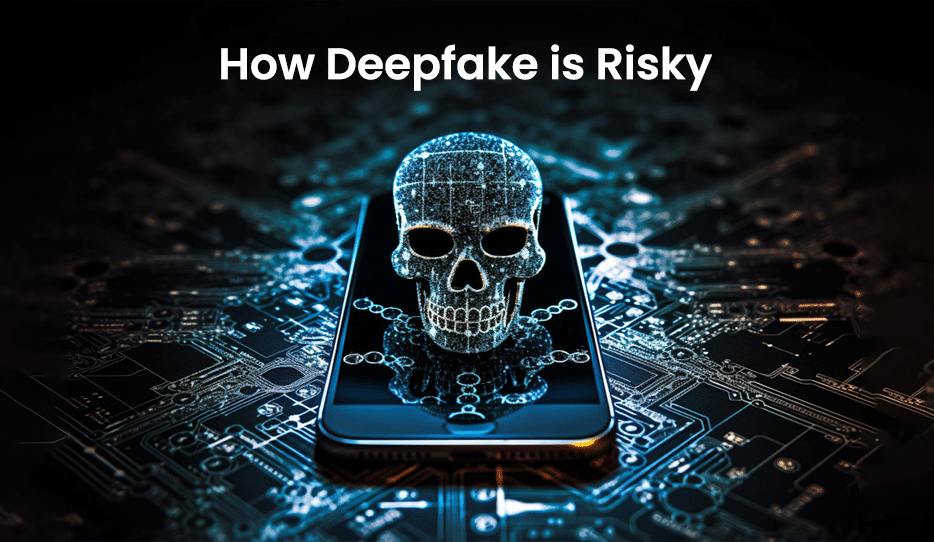
What is deep fake?
Deepfake has gained wide accessibility and popularity. Deepfake refers to videos or any digital representations which are produced using Artificial Intelligence, digital software, and face swapping. The word Deepfake is a combination of “deep learning” and “fake”.
Deepfakes can create footages that depict events that have never actually happened in real life. The results are so convincing that target audiences are fooled into thinking the events actually transpired.
How are cybercriminals misusing Deepfakes?
Earlier, Deepfake technology was used to create only fake videos and images. But today it is also used in cloning voice messages. Cybercriminals use vishing and business email compromise (BEC) methods to execute their phishing attacks.
With its ability to convince people that something that is not true did in fact happen, you can imagine how Deepfakes boost the effectiveness of phishing campaigns that have been relying on gaining the trust of victims from the very beginning.
Vishing
Vishing includes fake phone calling that leads to the target victim divulging sensitive personal information. Employees can be tricked into believing it is their seniors who are calling them to ask for login credentials. Or hackers can pose as bank officials and request for sensitive card and account details. Earlier, cybercriminals had to develop their own “script” to fool their victims. But now Deepfakes give them never-seen-before accuracy and conviction.
Business email compromise
Hackers are increasingly using spear-phishing, which is a heavily specific form of phishing that choses specialized targets through thorough research and focus. With the advent of Deepfakes, hackers can now convincingly inject themselves into an ongoing email thread and prompt the target victim to release funds, reveal credentials, or visit phishing links. They can now cinch the deal by following up a spam email with a telephonic calls that recorded using Deepfake capabilities.
How Deepfake is a boon for social engineering
Politics: The Threat to Democracy
Deepfake technology has the potential to significantly impact elections by disseminating misleading videos that misrepresent politicians and their messages. These manipulated videos can sway public opinion, influencing the number of votes and ultimately affecting the election results. Consequently, the very foundation of democracy is jeopardized by the proliferation of Deepfakes in the political realm.
Celebrities: Reputation at Stake
Celebrities are prime targets for Deepfake videos due to the abundance of publicly available data. These videos are so convincingly realistic that it becomes nearly impossible to distinguish them from genuine footage. As a result, the reputations of celebrities are compromised as false videos circulate, causing harm to their personal and professional lives.
Biometric Vulnerabilities: Exploiting Authentication
Deepfake technology exploits biometric systems, which rely on facial and voice recognition techniques for authentication purposes. While these systems are designed to leverage an individual’s unique features for security, Deepfakes pose a significant risk. The use of Deepfakes can deceive biometric systems, allowing unauthorized access and compromising security measures.
According to McElroy, the COVID-19 pandemic and the widespread adoption of remote work have generated an abundance of audio and video data. This data can be utilized in machine learning systems to create highly convincing duplicates, further amplifying the threat of Deepfakes.
Albert Roux, Vice President of fraud at AI-based identity technology provider Onfido, acknowledges the notable risk Deepfakes pose to biometric-based authentication. Fraudsters have taken note of viral videos, such as the Tom Cruise Deepfake, and the availability of Deepfake tools and code libraries, which can be leveraged to bypass identity verification checks online. Criminals can easily generate fraudulent videos, audios, and photos using numerous applications, making Deepfakes a dangerous tool in the wrong hands.
Deepfake Cyberthreats: Society at Risk
Deepfakes pose a serious danger to society, blurring the line between reality and fiction. The technology’s potential to interfere in elections and the celebrity industry, among other domains, raises significant cybersecurity concerns. Organizations and individuals alike face disruptions to their functioning due to the increased prevalence of Deepfake-related incidents.
Combating Deepfakes: Overcoming the Challenges
Legislation and Regulation: Implementing laws and regulations specifically targeting Deepfakes can help address the issues caused by this technology. By establishing legal frameworks, authorities can hold perpetrators accountable and deter the malicious use of Deepfakes.
Corporate Policies and Voluntary Actions: Organizations should adopt robust policies to address Deepfake threats. Implementing guidelines and protocols can help prevent the spread of Deepfakes and safeguard individuals and businesses from potential harm.
Training and Awareness: Educating the public and raising awareness about Deepfakes is crucial. By enhancing public understanding of this technology, people can become more discerning when encountering videos that exhibit questionable behaviour, reducing the impact of Deepfakes on society and individuals.
Anti-Deepfake Technology: Developing and deploying advanced technologies to detect and combat Deepfakes is essential. Through the use of sophisticated algorithms and machine learning techniques, these tools can help identify and mitigate the spread of Deepfakes, enhancing overall cybersecurity.
In conclusion, the multifaceted nature of Deepfake technology necessitates a comprehensive approach to mitigate its adverse effects. By improving public awareness, implementing legislation, establishing corporate policies, providing training, and developing anti-Deepfake technologies, our society can collectively reduce the impact of Deepfakes and safeguard individuals and organizations from their potential harm.